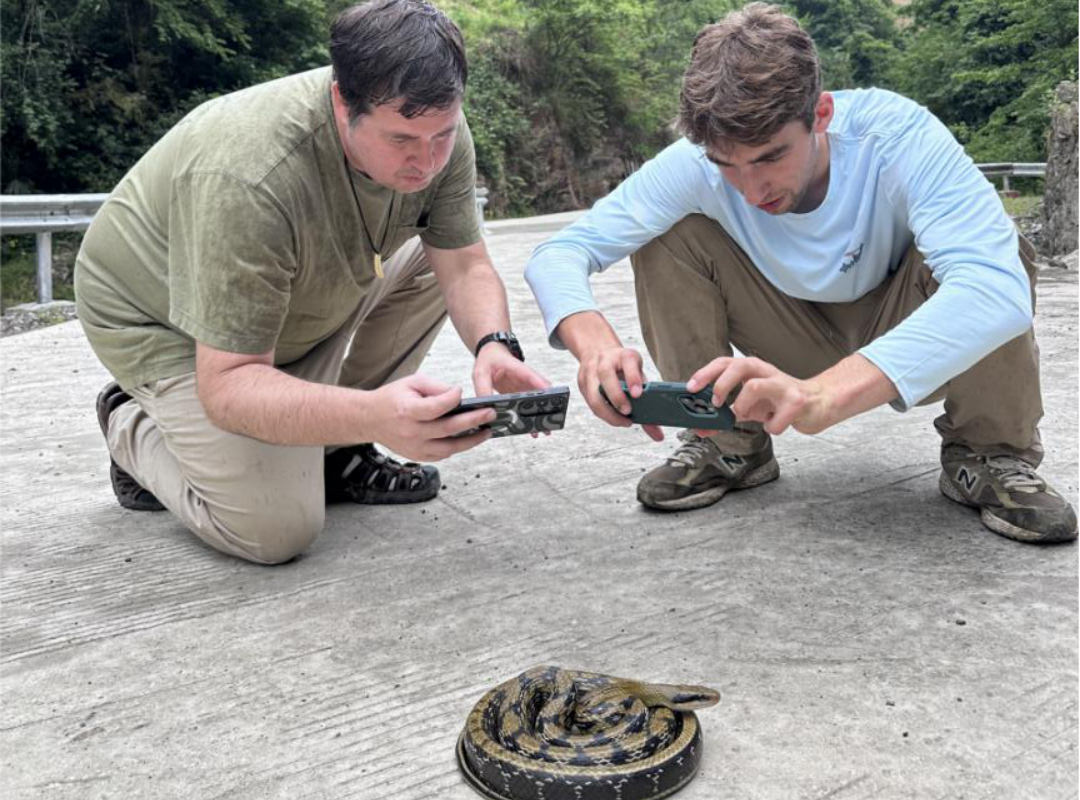Tracking Serpents in the Mist: A Six-Day Field Diary from Shennongjia
Updated:2025-05-27 Source:Shennongjia National Park
May 9–14, 2025 | Location: Shennongjia National Park
DAY 1: Into the Mountains Under a Foggy Moon – No Snakes in Sight
On the evening of May 9, moonlight quietly filtered through the forest canopy, casting an almost mystical glow over the vast wilderness of Shennongjia. A four-member team—Kevin Messenger, an American professor at Nanjing Forestry University, along with Li Yecheng, Wang Qi and Benjamin Genter (or “Ben” for short)—set out from Yichang for a night survey along the Jiuchong-Songbai Road. Their eyes scanned every ditch and every pile of fallen leaves, like seasoned hunters in search of elusive prey.
Finding snakes involves a matter of luck, skill, and experience. It requires a careful alignment of time, temperature, and terrain.
“The temperature’s a bit low tonight, and the moon is nearly full. Snakes probably won’t be very active,” Kevin murmured, more to himself than the group—a rational assessment grounded in ecological understanding rather than disappointment.
DAY 2: A Crimson Reunion – The Echo of a Snake 19 Years Later
At daybreak, the team joined Director Yang Jingyuan from the Science Research Institute of Shennongjia National Park for a visit to Dongxi, aiming to survey habitats suitable for Chinese giant salamanders. It took over three hours to drive to the remote valley. The water was crystal clear, revealing darting fish and tadpoles. Although no salamanders were spotted, the habitat was ideal—diverse vegetation, steady water flow, and promising ecological indicators. The team took detailed photos and notes, laying the groundwork for future surveys.
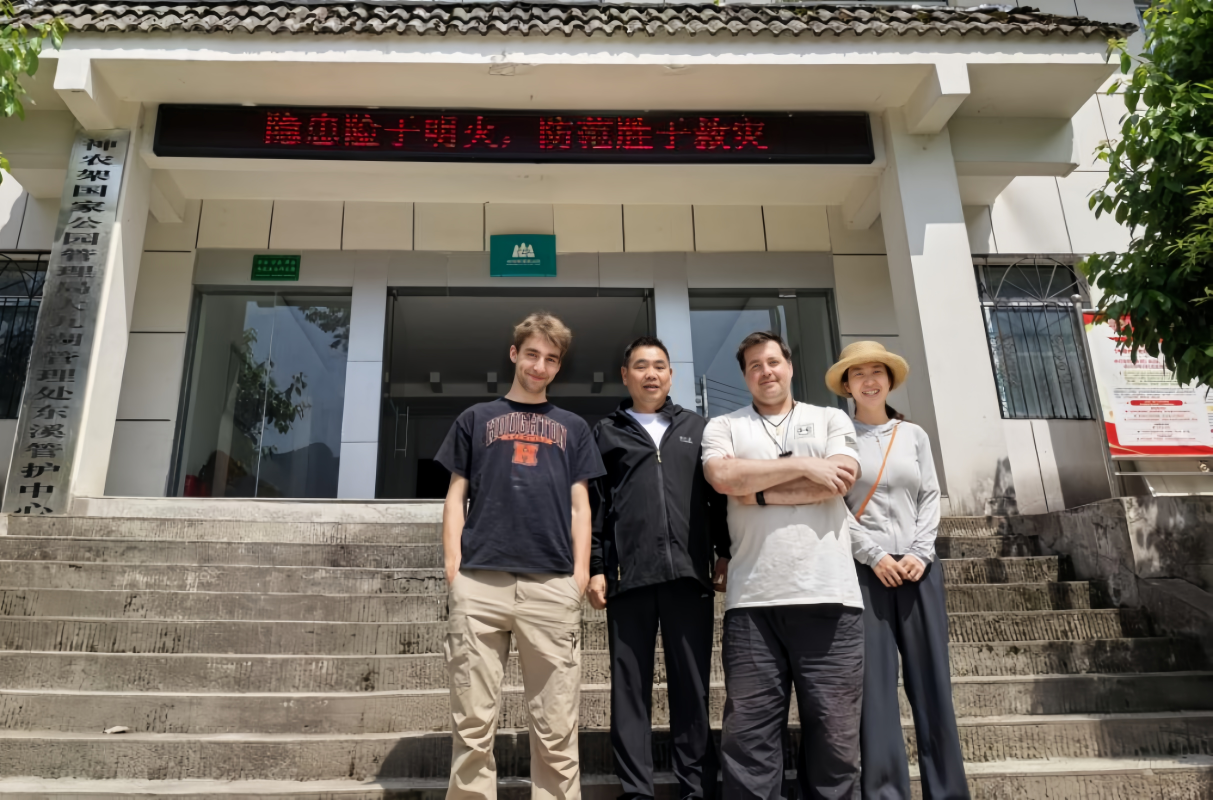
Later, while walking through the forest, Ben spotted something unusual in the crevice of a rock. He carefully turned the rock over and revealed a juvenile banded red snake - Chi lian she (Lycodon rufozonatus). This was Ben’s very first snake he found in China. Its vivid red and black bands shimmered in the sunlight like an ancient ribbon woven by the forest itself.
“I found my very first China snake, of this very species, here in Jiuchong back in 2006.” Kevin said softly, his tone carrying the warmth of an old memory.
For Ben, this snake was a new discovery; for Kevin, a reunion. In that moment, the years folded in on themselves. Ben gently cradled the snake with both hands, while Kevin seemed momentarily transported back to that first evening nearly two decades ago.
That night, the team split up for a more extensive search. Ben and Wang Qi patrolled on foot, checking leaf litter, stone crevices, and roadside drains. Kevin and Li Yecheng patrolled by car, maintaining contact between the groups.
Though the night deepened and the air cooled, no snakes appeared.
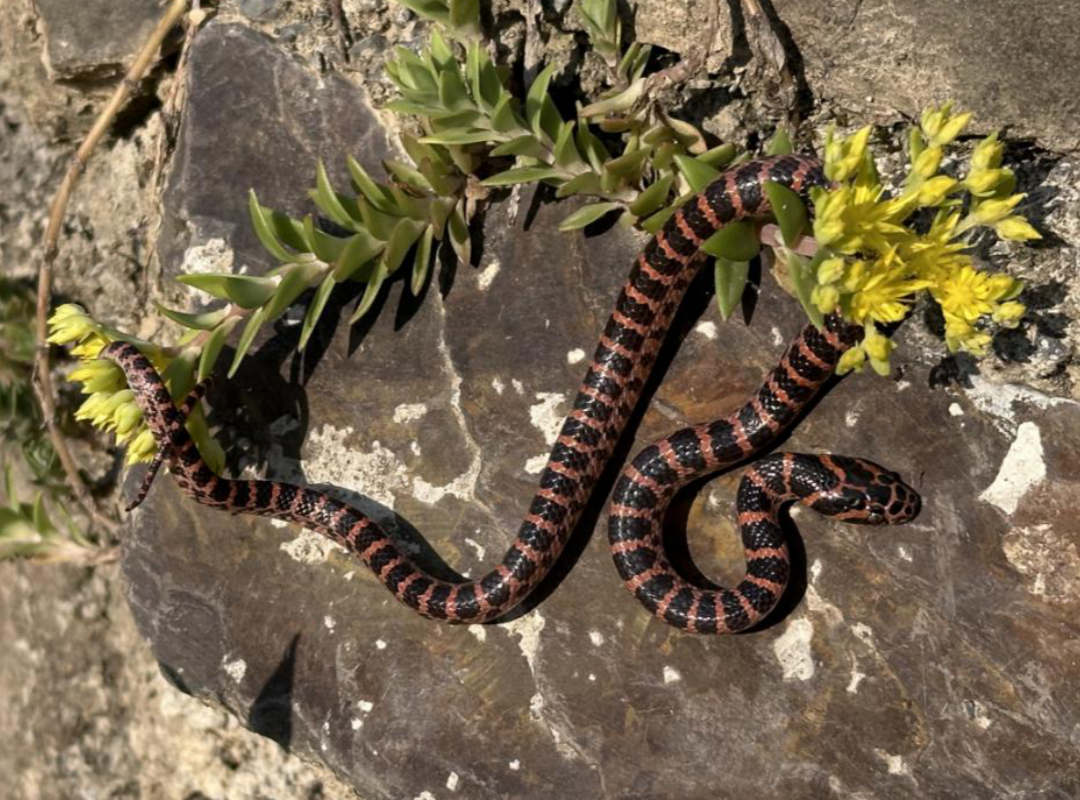
When they regrouped, Ben was already waiting by the road, muddy and wet to the knees, holding three frogs he had found. Calm and focused, he described each amphibian’s location, habitat, and probable species. Kevin recorded everything diligently—seemingly minor, yet valuable data that would contribute to a fuller picture of Shennongjia’s amphibians and reptiles.
Fieldwork rarely delivers surprises on cue. Most nights, it's a quiet rhythm of steady accumulation and occasional echoes.

DAY 3: Snakes on the Move – The Drama of the False Cobra
The journey from Dongxi to Pingqian followed winding mountain roads that, while not steep, curved endlessly along the hillsides. The landscape outside the window seemed to change like a scroll—cascading waterfalls, drifting mist, patches of sunlit forest. The convoy paused frequently to capture butterflies, wild orchids, and the faint trails left by snakes.
Around a sharp bend, both Kevin and Ben shouted at once—something had just darted into the underbrush. A glinting black tail vanished in a flash. Kevin slammed on the brakes and the car screeched to a halt, and Ben in the passenger seat, leapt out like an arrow, racing after it. Kevin, still in the car, just smiled—he knew that instinct well. It was a familiar thrill, a natural reflex born from love of the wild.
They had found a nearly two-meter-long male black-striped snake - Wu shao she (Ptyas dhumnades). Its glossy scales reflected sunlight with a metallic gleam—an impressive creature.
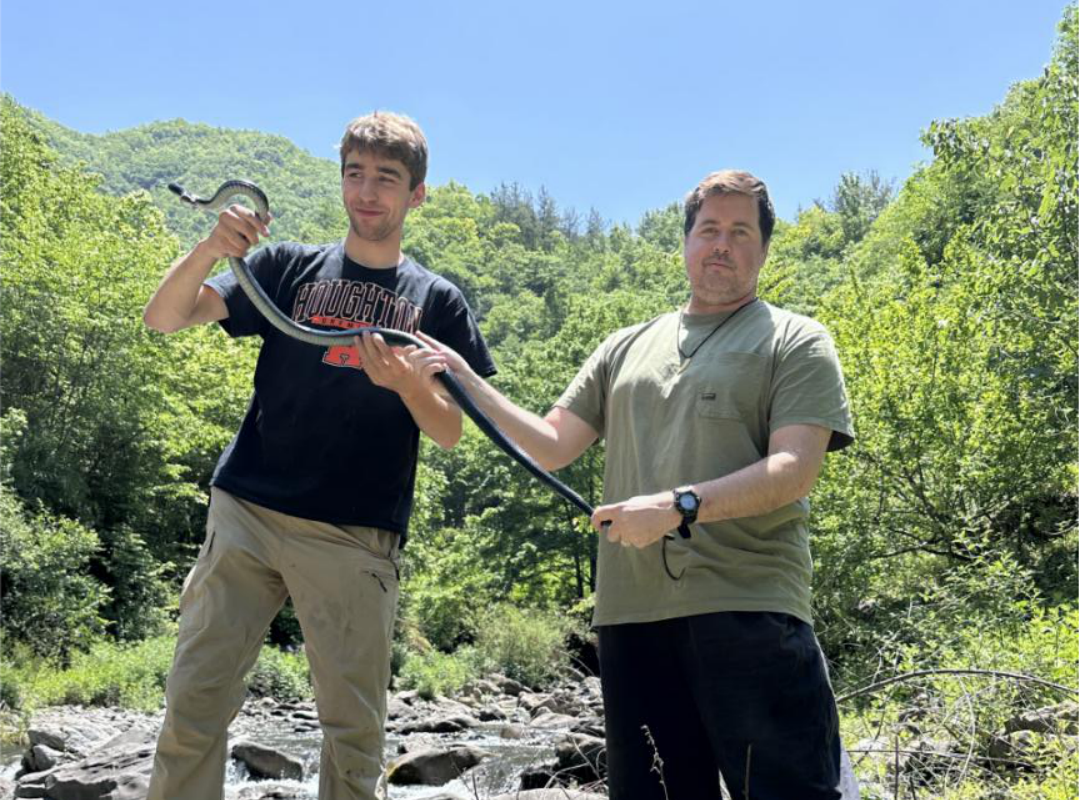
As crazy as luck had it, this was also Kevin’s second (live) China snake from back in 2006, and now it was Ben’s second (live) China snake in 2025. History was repeating itself at an eerie level at this point. Surely Ben’s third China snake would not also have been the same species Kevin found as his third species.
They brought the snake to a nearby stream for photography, capturing both close-ups and wide-angle environmental shots. In its native habitat, slithering across clear waters and wildflowers, the snake moved with the grace of a returning king.
When released, it slipped quietly back into the forest, leaving not a sound—like a performer’s final bow.
Later that afternoon, they passed by a farmhouse Kevin had visited 12 years prior. The yard looked unchanged—still veiled in wood smoke and memories. He exchanged greetings with the owner as if no time had passed.
In the distance, Ben could be seen holding a snake, followed by a shout: “snake!”
This one was a false cobra - Xie lin she (Pseudoxenodon macrops), flattening its neck, creating a hood to imitate a cobra’s threat display. Kevin chuckled, “This is what locals often mistake for a real cobra.”
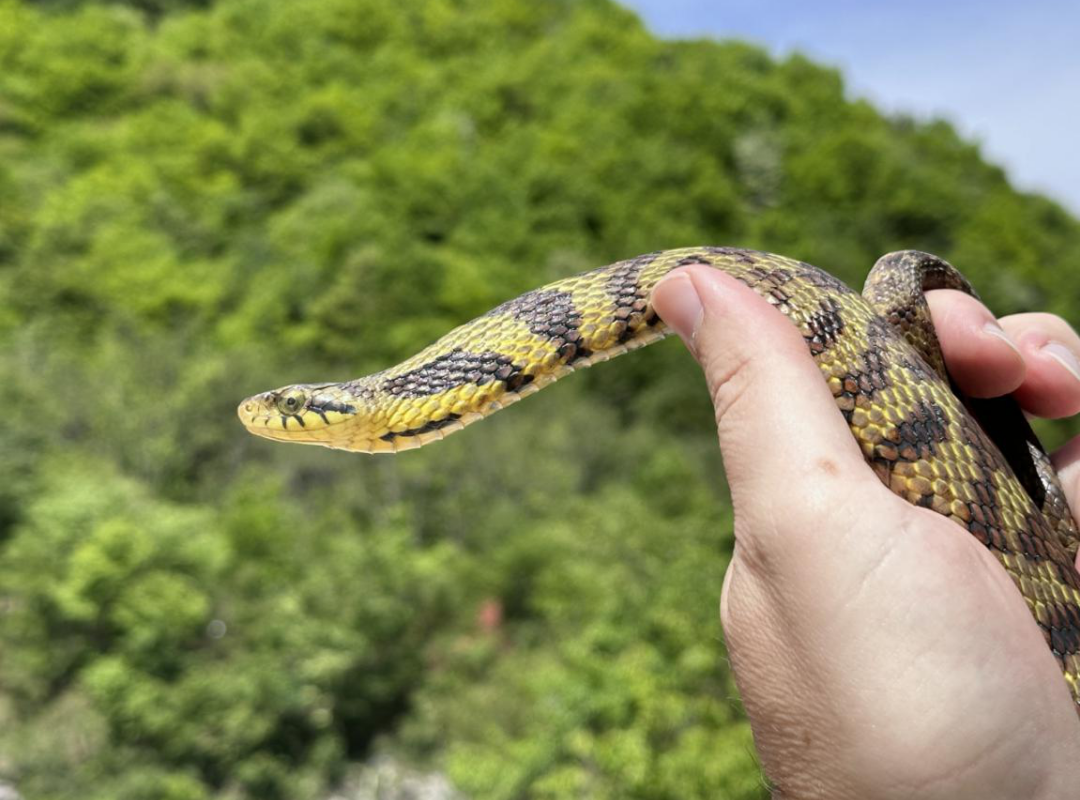
They brought it down to the stream for filming. A few salamanders swam lazily nearby, adding a touch of drama to the scene. Just before disappearing into the underbrush, the snake gave the camera a final glance—as if acknowledging its moment onstage.
DAY 4: A Gaze of Red – Memory Rekindled
At dawn, Ben set off eagerly with his backpack. Around noon, he returned with excitement in his step and a snake bag in hand. When opened, the group gasped—there it was: Protobothrops jerdonii (Cai hua yuan mao tou fu), also known as Jerdon’s pitviper in English, brilliantly patterned in red and green.
“It’s the one,” Kevin said quietly. 12 years ago, he had been bitten by the same species right in these mountains—a life-altering incident that left no permanent damage but marked a turning point in his dedication to Chinese herpetology.
They brought it down to the stream for filming. A few salamanders swam lazily nearby, adding a touch of drama to the scene. Just before disappearing into the underbrush, the snake gave the camera a final glance—as if acknowledging its moment onstage.
It was not a brush with death, but a moment of awakening.
This viper now lay quietly among moss, its colors shimmering in the sunlight. The team spent a long time photographing and documenting it—head shape, scale rows, behavioral patterns. For Kevin and Ben, this was both science and reverence.
Ben gently returned it to where it had been found. The snake lay motionless for a moment, not in fear but in quiet acknowledgment—as if sharing an unspoken truth about the balance and tolerance of wild places.
DAY 5: “The Day of the Rat Snakes” – When the Forest Gives Generously
In Xiagu, the cool, damp climate made for ideal snake-spotting conditions. Around noon, a truck driver pulled over.
“Looking for snakes? I know just the spot,” he said.
He led the team to a secluded mountain home belonging to forest ranger, Lei Rong. His garden was full of plants and hand-carved animal statues—from deer to eagles to, of course, snakes.
Without many words, Lei pointed to a forest path. Sure enough, after a short walk, the team spotted a large beauty rat snake hei mei jin she (Elaphe taeniura) curled serenely on a mossy rock. Kevin moved in smoothly and secured the nearly two-meter snake. Excited, Ben exclaimed, “Let’s keep going—the snakes are moving!”
Moments later, they encountered a king rat snake Wang jin she (Elaphe carinata), recognizable by the faint crown-like pattern on its head. “The scales on their forehead form grooves that resemble the Chinese character ‘王’ (king),” Kevin explained.
Then Ben returned from another trail with a third snake—a slightly smaller beauty rat snake.
Three rat snakes in one day. It felt as though Shennongjia had opened the gates and poured all its gifts at their feet.
As dusk fell, the team decided to keep the snakes overnight for careful comparison the next morning. Before leaving, Lei Rong handed them some snacks for road cruising.
As they descended the mountain, they were stopped by a car. Out stepped a man who introduced himself as Shi Dequan, a local official. Upon learning they were doing scientific research, he mentioned he had once met an American guy named Kevin conducting fieldwork here.
From the car window, Kevin smiled and said, “That might’ve been me.” The coincidence drew laughter from both sides.
Shi helped them find a local inn and then disappeared as swiftly as he had arrived.
That evening, the bond between people and the forest seemed to deepen—a silent understanding that quietly took root.
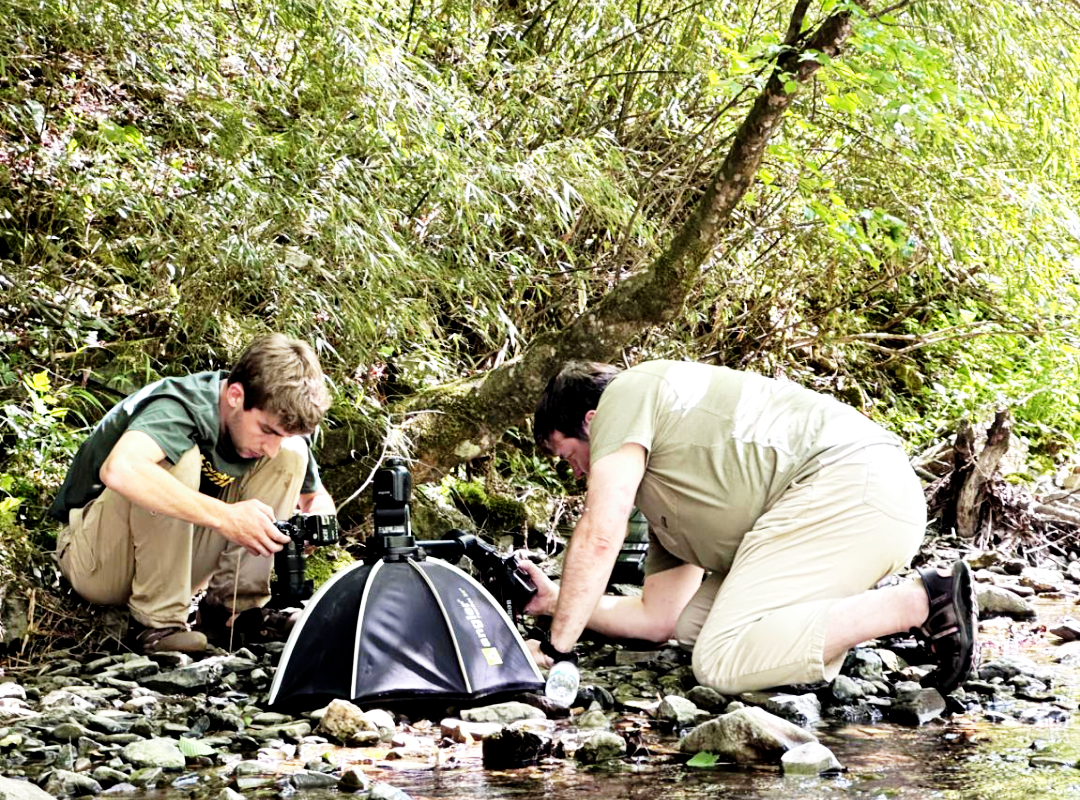
DAY 6: A Birthday and a Farewell to the Forest
Morning came with a breeze and birdsong. In the clearing behind the inn, the team set up a makeshift table for comparing the two beauty rat snakes. They documented everything from head shape to body length to color patterns. Under the rising sun, the snakes stretched and moved as if aware of the attention.
Both were released where they’d been found, gliding into the underbrush like brushstrokes vanishing into a living landscape.
That evening, they returned to a restaurant in Muyu town. Friends from Shennongjia National Park and Hubei Daily had prepared a surprise birthday dinner for Kevin. Laughter filled the room, candles flickered, and the warmth of companionship echoed beneath the eaves.
“Time in Shennongjia is circular,” Kevin reflected. “I come every year, but each time feels like the first.”
This year, he was joined by a new companion—Ben, a bright-eyed student from across the Pacific, burning with the same passion.
Years of experience had taught Kevin to read the silent whispers of moss and scales, but this time, he deliberately slowed down. He knew that understanding nature was like forming amber—it takes the overlapping perspectives of generations. Young explorers, armed with fresh instincts and digital-era tools, might see what even he could not.
Epilogue: In the Mountains, never say goodbye
On May 14, the road out of Shennongjia was damp and quiet. The wheels rolled gently over the forest floor. Ben sat by the window, lost in thought.
“Would you come back?” Kevin asked.
Ben nodded, eyes never leaving the distant ridgeline. “Of course. I want to see that Chi lian she again—and the ones we haven’t met yet.”
The wind carried the scent of grass and earth. The car rolled on, leaving behind only footprints, and the lingering stories of snakes and mountains.
Because here, in Shennongjia, the story never truly ends.(By Li Yecheng)
Address:36 Chulin Road, Muyu Town, Shennongjia Forestry District, Hubei Province 鄂ICP备18005077号-3
Phone:0719-3453368



